- Home
- Kevin Lucia
American Horror Cinema
American Horror Cinema Read online
An Examination of Postmodern American Horror Cinema
By Kevin Lucia
Copyright 2012 - © Kevin Lucia
All rights reserved.
An Examination of Postmodern American Horror Cinema
As an adolescent and then later as a teenager, I wasn’t a fan of the horror genre. I mostly devoured science fiction novels and comic books and Saturday morning cartoons, though childhood staples such as these certainly possessed enough strains of horror DNA. But mostly, I was a Flash Gordon, Star Trek, Star Wars, Spider-Man & His Amazing Friends kind of kid. So memories of the few times I actually saw something frightening stand out vividly.
The earliest incident occurred in a movie theater lobby, when my father took the family to see Never Cry Wolf. The movie itself wasn’t scary. But in the lobby beforehand, while waiting in line, I saw a poster for My Bloody Valentine. My memories of the poster’s exact details are sketchy – a shadowy face in a blood-smeared gas mask – but I remember my visceral reaction. Something felt wrong about that poster's hidden face and wide, crazed eyes.
The second incident occurred a few years later around Christmas, visiting my Aunt and Uncle’s. Bored and flipping through the television channels, I came across Vincent Price’s House of Wax, circa 1953. The adults must have been busy elsewhere, because I kept watching. And while the thought of being turned into a living wax dummy – unable to talk or move, dead and alive at once – was frightening enough, the scariest scene came when a female character (if I’m remembering the right movie) was impaled through the abdomen with a metal pipe, pinned to a wall. But that wasn’t the worst. The worst was watching blood slowly trickle out of the pipe’s end. As if she’d become nothing more than a bag of blood drained by a big metal straw. Like those weird “space milk” pouches they’d started serving with our school lunches.
The third incident occurred when I was fifteen. One day in Art class, I went into the storeroom for supplies. There, I accidentally discovered my Art teacher’s old stash of EC Horror Comics. In one of them, I read a story about two brothers walking in the woods. They stumbled across a swamp. One brother got stuck, sucked down by the mire. The other fled home and lied to his parents about his brother’s whereabouts, saying he didn’t know where he was.
Of course, it wasn’t long – after the dead brother was declared missing – that the cowardly brother heard slurping footsteps outside his window at night. Driven mad by guilt, he eventually returned to that swamp, and...well, I guess we all know how that story ends.
And it certainly left me disturbed. Filled with an unsettling disquiet. How could someone leave their brother to die like that? How horrible would it be carrying all that guilt? What about the brother transformed into a walking mud-thing? He may’ve gotten his vengeance...but he was still dead. And made of mud. Nothing good about that, at all.
Looking back on those three very different experiences, I can now recognize in them seeds of what the horror genre has tried to grow in readers (and by the 1930’s, viewers) for centuries. Fear. But not fear for sadistic enjoyment, or the ghoulish pleasure of watching others suffer. Rather, fear of things that violate our sense of what is right and natural. Fear of things that aren’t supposed to be.
And, even though my retrospective is certainly colored by nostalgic hindsight, an irony: how relieved I felt after leaving that movie theater and my Uncle and Aunt’s. Because in both cases, the safety of the family car, the familiar sounds of my parents’ conversation and music from their favorite easy-listening radio station reaffirmed my unconscious belief in things as they should be. Even as I shivered while gazing into the dark night, normality had been restored, and I felt happy for it. And my happiness, I believe, had been intensified by the fear I’d felt only moments before. In a strange way, my fear had reaffirmed my belief in and desire for normality.
The emotional fear and eventual relief I felt in the first two incidents embody decently enough the function of a “classic” horror movie. Essentially, in classic horror movies, the narrative opens with the violent disruption of the normative order by a “monster” (Pinedo 19). The monster could be almost anything, of course. Aliens, supernatural beings, mad scientists, even a deviant transformation from within a person. The rest of the story then revolves around the “monster” wreaking havoc, instilling terror in the hearts of the people and their ineffectual attempts at defeating it. Eventually, either violence or knowledge defeats the monster, restoring the normative order (19). In essence, the unnatural thing or “monster” is bested, and everything becomes as it once was – as it should be.
Also, the boundaries between “good” and “evil”, “normal” and “abnormal”, “human” and “alien” were clearly marked in classic horror movies, threats to the existing social order were external, and eventually, human agency – or the forces of “good” - prevailed (19). My perception of My Bloody Valentine’s movie poster was informed by this paradigm. A strange, inhuman thing leering at me with an almost tangible air of malevolence - I knew that was bad. When a little older and bit more sophisticated, I viewed the killer in House of Wax as clearly evil, killing innocent human beings (even though, in the fullness of the movie’s plot, the killer was seeking revenge for a crime perpetrated upon him).
My reaction to that third fear experience - the EC horror comic I discovered – felt a little more nuanced. Because, really - who was “evil” in that story? One brother was certainly a selfish coward, abandoning his sibling to die in a swamp. And it could certainly be viewed as a morality play, the moral of the story being: “Don’t desert your loved ones, because they’ll come back for you from beyond the grave.”
But his overwhelming guilt seemed to exempt him from being truly evil. And the swamp monster his brother became wasn’t exactly evil, either. Merely a sorrowful wraith seeking vengeance. I came away from that story feeling uneasy, because I didn’t know where my sympathies should lie. With the wronged brother, now turned into a lurching horror that would never find any peace? Or with the weaker brother whose worst crime was merely fear and indecision in a crisis?
This reaction more closely resembles what has become known as postmodern horror. Very much like classic horror, postmodern horror revolves around the violent introduction of a “monster” upon a normative state. People ineffectually try to defeat this monster. However, postmodern horror differs from classic horror in ways similar to my reaction to that EC horror comic. Throughout the postmodern horror movie’s narrative, lines of “good” and “evil” are blurred. Very quickly, characters – and by proxy, audiences – learn or at least suspect there’s no way to beat this monster. “Good” (or whatever is loosely defined as “good”) will not win in the end. Audiences are perhaps left feeling uneasy, unsettled because the narrative’s resolution doesn’t offer closure. The monster still lingers, ready to strike again (19).
Much has been said and written about this evolution of horror cinema from its classic origins to a more postmodern framing. Much of it negative and critical. Often enough, “postmodern” is an adjective used negatively, especially among critics of popular, mass culture (Syder 78). According to Frederic Jameson, in his essay “Postmodernism, or The Cultural Logic of Late Capitalism”, postmodernism is an indication that...
“...producers of culture have nowhere to turn but the past: the imitation of dead styles, speech through all the masks and voices stored up in the imaginary museum of a now global culture.” (78)
In other words, horror movies have said everything possible to say, and the only recourse is to regurgitate these same styles and themes over and over, until their “meaning” becomes lost and diluted. Fans of “classic horror cinema” and critics of the genre have likewise suggested a decline in
the horror genre since its postmodern development, that ensuing installments of postmodern movies have become increasingly superficial and derivative (Syder 79), most specifically the Scream movie franchise (which we’ll come back to, shortly). In the words of one critic: “...the tongue-in-cheek genre again begins to ruin the horror film as an effective meditation on issues which affect society” (79).
But need this be so? Does postmodern horror cinema truly mean the end of “horror film as an effective meditation on issues which affect society”? Certainly, as I’ll indicate in this essay, elements of postmodern horror cinema do pose alarming questions about the development of our society, especially considering its relative box office success. But this, in itself, could also be read as horror cinema reflecting our situational, collective fears. Which produced which? Also, I’ll briefly examine postmodernism, and sketch the development of the horror movie itself in an attempt to show that it’s been concerned with “postmodern themes” for quite some time now, consistently delving into the anxieties of our nation over the last fifty years. And finally, perhaps illustrate that postmodern horror cinema does provide an “effective meditation on issues which affect society.”
First, a brief grappling with the term “postmodernism”. Essentially – in very parsed language – “postmodernism” is concerned with the challenging of century-old assumptions about how we perceive and make sense of this world (Syder 80). We can trace postmodernism’s development back to the philosophies of Friedrich Nietzsche, who argued that although we believe we “know” things of the world when we speak of them, all we really possess are metaphors of those things. Metaphors which do not correspond to anything “true” (80).
For Nietzsche, there were no intrinsic laws of nature or morality. Everything we believed to be morally true was simply a construct created in our minds. So the development of postmodernism centered on the growing uncertainty of the “truth” about the apparent, familiar world surrounding us, and our perception of it (80). Of course, Nietzsche’s view isn’t the only perception of postmodernism. It could also be described as “part of a slowly emerging cultural transformation in Western societies, a change in sensibilities”, or the “erosion of universal categories...the breakdown of moral clarities”, a “profound loss of faith in master narratives”, or a “crisis of cultural authority” (Pinedo 17). Postmodernity can also be understood as “a crisis and transformation of regulation and control that characterize modern societies and cultures in the post-war period” (Lockwood 4). In other words, the postmodern world is an unstable one in which categories break down, boundaries blur, revered institutions are questioned, morals and truths are no longer absolute, being more fictions than anything else (17-18).
The implications of postmodernism’s impact on the development of horror cinema seem clear, then. As society became more postmodern, it began questioning all the “truths” it had taken for granted for so long, and horror cinema changed in response to society’s philosophical beliefs. In essence, it could be argued that horror cinema has become a startling and perhaps alarming barometer of our collective social consciousness. This would seem to refute the argument that “postmodernism” has “ruin(ed) the horror film as an effective meditation on issues in society”. Our society has become increasingly postmodern. Horror cinema has merely shifted its focus to correspond, meditating on postmodern societal issues.
But is it possible that, instead, this pervasive philosophy of postmodernism has infiltrated horror cinema, co-opted it, ruined it for any further meaningful expression?
A closer look at the horror genre’s history and development in film – even before the widespread prevalence of postmodernism – seems to refute this argument, also. The core of postmodern thought is the tension existing between what we “think” we know about the world around us, and what actually exists. This tension has always existed at the core of the horror tale, even before horror cinema developed (Syder 81).
Horror is often described as a genre tapping into our fear of the unknown. The “horror” comes from the safety of our “known” world being violated by something “unknown” that lies beyond the “laws of nature” (81). And, of course, because this “monster” has now proven our knowledge of those laws to be misunderstood or illusory, our entire perception of the world and its laws are brought into question (81). Horror exposes everyday terrors: the pain of loss, the mystery of death, our unpredictable world, how good intentions often fail (Pinedo 26).
And the terror and suspense of horror cinema are often generated by keeping the relationship between the characters’ knowledge and perception in flux, as they are often never quite sure what’s happening to them, how these things have come to be (82). Granted, the framing of the classic horror movie sees the “monster” defeated and the normative state restored, but these concerns about knowledge and our perception of the world could be considered very postmodern concerns.
Or are they merely human concerns? It can also be argued that postmodernism is much bigger than Nietzsche and his philosophies. They can be viewed, instead, as very tangible reactions to the massive social upheaval that began after World War II, especially in the sixties. And horror has historically aligned itself with social and global concerns and times of stress. In his philosophical treatment of the horror genre, The Philosophy of Horror: Paradoxes of the Heart, Noel Carroll charts the development of several different “horror cycles”, which he believed emerged during times of social upheaval and stress. Based on his research, he found the horror genre very capable of incorporating or assimilating social stresses into itself (207).
For example, what Carroll calls the “thirties movie cycle” (horror movies filmed in the 1930’s), ironically enough showed a great deal of sympathy for these “horror monsters”. Frankenstein's monster, King Kong, the Werewolf of London, even Dracula – who in the thirties film, at one point even yearns to be really dead – are posed as oddly marginalized characters, even in their horribleness (208). Especially Frankenstein and King Kong, who at several points are portrayed as persecuted victims. Of course, this was also during the Great Depression. The prospect of being unemployed, cast off from “civilized” society through no fault of one’s own could easily be imagined as a common fear. So Carroll hypothesizes that movies like these expressed recognizable anxieties audiences could connect to, providing them with images for thinking about these anxieties (208).
Another example would be the giant bug monster films of the fifties. Giant insects, carnivorous vegetables, bug-eyed aliens were always poised on the brink of invading, consuming, and dominating the world. Not only do the concepts of irradiated and mutated bugs grown to immense proportions express anxieties about the fallout of the new nuclear bomb age, but Carroll also proposes these monstrous, inhuman beings incapable of feeling any human emotions bent on consuming and dominating the world served as nicely as stand-ins for the “international communist menace” of the then new Cold War Era (208).
In regards to postmodernism and the “current horror cycle”, Carroll notes their parallel development following World War II, during this Cold War Era, proposing that the horror genre increasingly expressed our culture’s anxiety over the growing instability of cultural norms and postmodern relativisms – “there are no truths, everything’s relative” (212).
As the United States gradually saw its standing as a world power diminished, other “horrors” reared their heads in our collective consciousness. The losses of the Vietnam War. The often-violent Civil Right struggle here at home, and the shooting of students on American university campuses in the midst of protests and demonstrations and even riots that spilled out of control (Lockwood 4).
The streak of assassinations, the Middle East oil crises, increasingly violent hostage situations, and our government’s fumbling arms deals. And as political and business scandals, social reform, the sexual and drug revolution and changes in religious thought continued to send turbulent waves throughout society, the horror genre –with its c
ore being a structural and thematic commitment to fragility and instability – became the perfect ‘pop art’ symbol for the growing fear that “things fall apart, the center cannot hold” (212).
So for Carroll, at least, postmodernism hasn’t tainted or overly influenced horror, rather the same anxieties arising from massive social, economic, political, sexual and religious upheaval have helped develop postmodernism as the intellectual response to these turbulent changes, and the current cycle of horror cinema as the popular response to these turbulent changes.
The question then becomes: what is postmodern horror cinema? According to Isabel Pinedo, postmodern horror constructs a much more insecure and fragile sense of the world:
The universe of the contemporary horror film is an uncertain age one in which good and evil, normality and abnormality, reality and illusion become virtually indistinguishable. This, together with the presentation of violence as constituent feature of everyday life, the inefficacy of human action, and the refusal of narrative closure, produces an unstable, paranoid universe in which familiar categories collapse (Lockwood 1).
Critic Tania Modelski, however, classifies the postmodern horror film a little more harshly, calling it “cinema with minimal plot and character development”, featuring “underdeveloped, unlikable characters”; a “de-centered, disordered film” that at best changes textual codes in order to disrupt narrative pleasure (Pinedo 18-19).
Pinedo, however, disagrees with Modelski on the point of disruption of narrative pleasure, proposing that audiences do enjoy postmodern horror cinema and take some sort of intellectual pleasure from it, suggesting that postmodernism could foster “productive contradictions” within the narrative of a contemporary horror film that would lend itself to narrative pleasure in the audience (19).

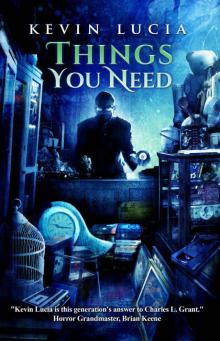 Things You Need
Things You Need A Night At Old Webb
A Night At Old Webb A Brother's Keeper: A Clifton Heights Tale
A Brother's Keeper: A Clifton Heights Tale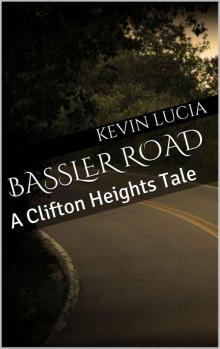 Bassler Road: A Clifton Heights Tale
Bassler Road: A Clifton Heights Tale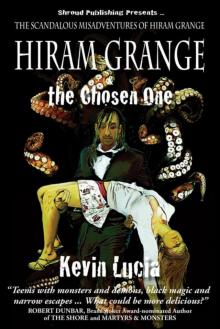 Hiram Grange & The Chosen One
Hiram Grange & The Chosen One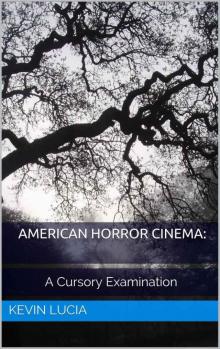 American Horror Cinema
American Horror Cinema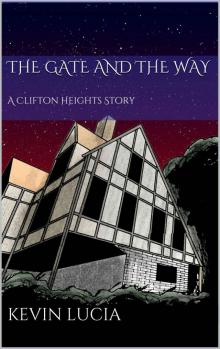 The Gate and the Way: A Clifton Heights Story
The Gate and the Way: A Clifton Heights Story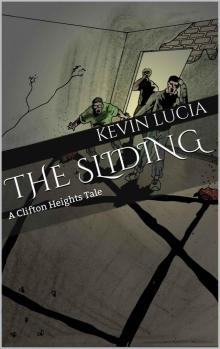 The Sliding: A Clifton Heights Tale
The Sliding: A Clifton Heights Tale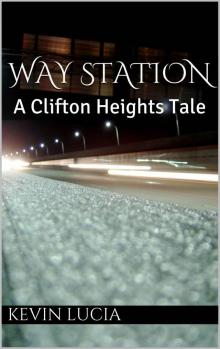 Way Station: A Clifton Heights Tale
Way Station: A Clifton Heights Tale